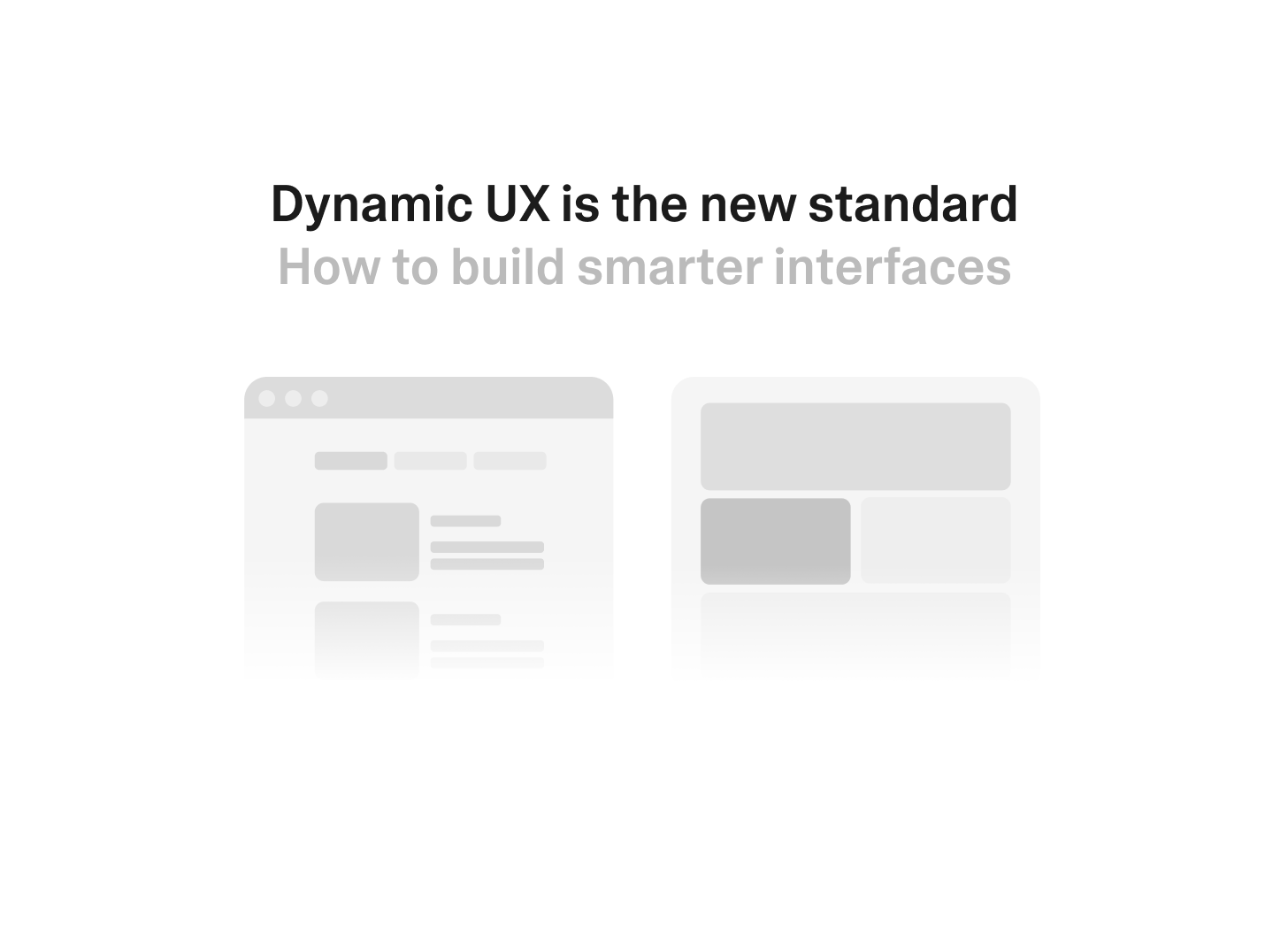In my last post, I said: Invisible UX is coming.
While that holds true, here’s what most people missed:
Invisible UX doesn’t mean no interface.
It means no friction.
The best interfaces today don’t look smart.
They feel smart.
They show up only when needed.
They adapt to you.
They guide, not overwhelm.
The shift is already here:
We’ve moved from static screens to dynamic systems.
From layout choices to logic decisions.
From “Where should this button go?” to “When should it even appear?”
Interfaces aren’t static anymore.
They’re real-time systems.
Always adapting. Always learning.
The problem:
Most teams still design like it’s 2015.
They build:
• One-size-fits-all onboarding
• Dashboards that ignore user roles
• Pricing pages that never adapt
Everything is static.
Everything treats users the same.
But users behave differently.
And now, our interfaces can too.
The answer: Invisible UX via Dynamic Logic
This is what it looks like:
→ Pricing that shifts with usage
→ Onboarding that skips what you’ve done
→ Dashboards that match your role
→ Tooltips that appear only after hesitation
→ Support prompts when you're stuck
The best UX feels invisible.
Not because it's minimal.
But because it shows up at the perfect moment.
How to design like this:
You don’t need a big team.
You need a new angle.
→ Design flows, not screens
→ Design behavior, not layout
→ Ask:
• What does the user need right now?
• What can we remove?
• What should appear only in context?
Then build it with tools like Lovable.
Prompt atomic components.
Link them with dynamic logic.
The more you understand user intent,
The more powerful your UX becomes.
The designers who master this shift will own the next decade.




Honest Feedback: This post seems very low effort and obviously ChatGPT. The Smart. Adaptive. Human. for example and then what hurts the most is the Invisible UX isn’t less interface.
It’s just perfectly-timed interface.
The it isnt x, its y trope of AI is in every post now and I am very dissapointed to see that yours is the same... I will stay on for one more but if it is the same I'll unsubscribe.
100% agree with you Felix! It reminds me of something I shared a while back about the expectations users bring into every experience now - they’re no longer just comparing your product to direct competitors - they're comparing it to ChatGPT and Spotify: tools that learn, predict, and adapt.
And invisible design is what enables that kind of intelligence. I unpacked that over here, if helpful: https://open.substack.com/pub/karozieminski/p/user-personas-are-dead-ai-powered
Curious- do you think we’ve already reached a point where invisible UX is becoming the norm? Or is it still more of a north star for most teams?